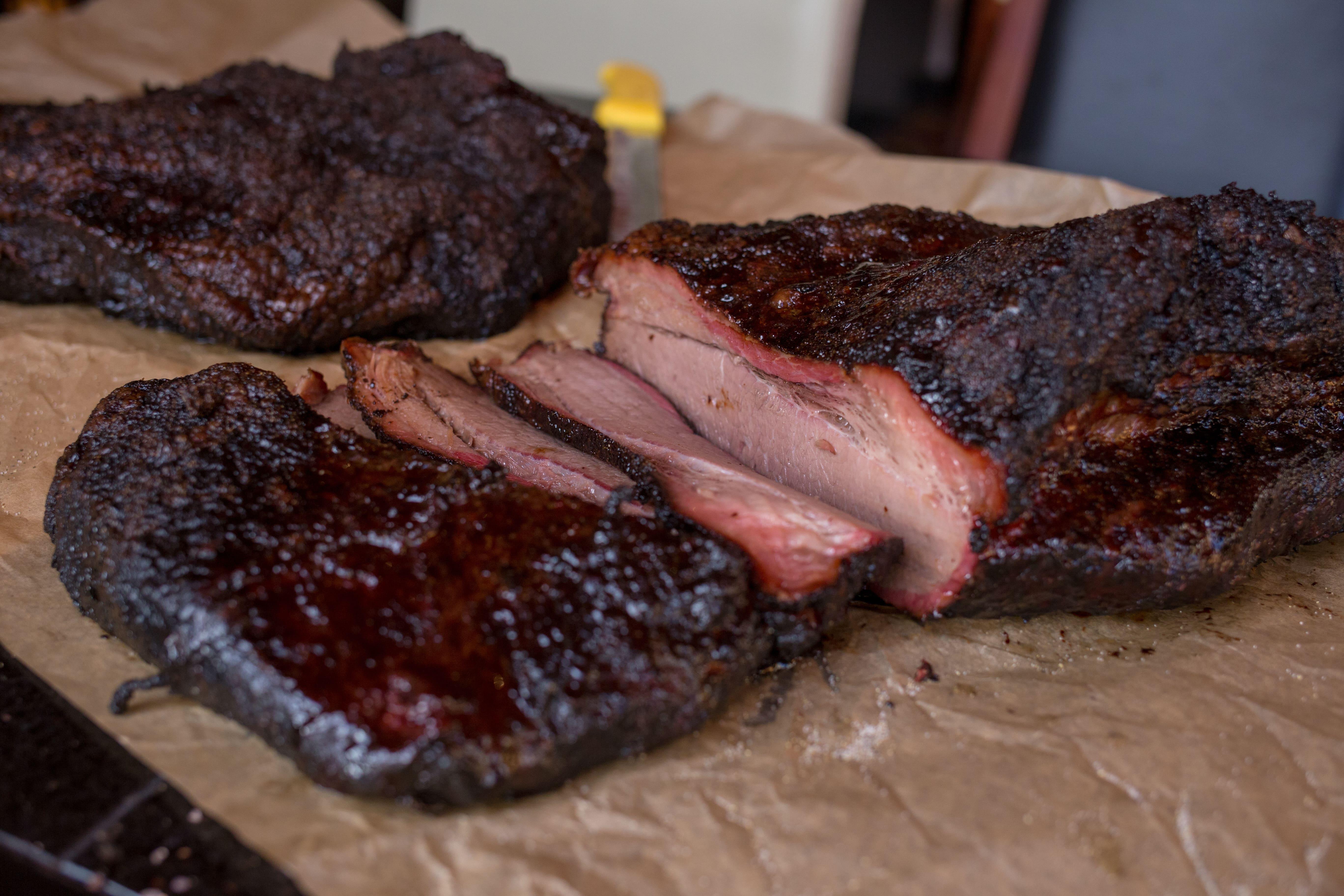
Understanding Brisket Wrapping
What is Brisket Wrapping?
Brisket wrapping is the culinary technique of encasing a brisket—typically in aluminum foil or butcher paper—during the cooking process. This practice, often referred to as “The Texas Crutch,” was pioneered by competition barbecue experts seeking to enhance cooking efficiency and control the outcome of their meat. When a brisket reaches a certain internal temperature, wrapping helps to push through the so-called “stall,” a phase where cooking can temporarily halt due to moisture evaporation.
Imagine a pitmaster wrestling with a stubborn brisket that refuses to rise in temperature. Wrapping the meat not only aids in maintaining heat but also prevents excessive moisture loss, yielding a juicier final product.
The Purpose of Wrapping Brisket
The primary purposes of wrapping brisket include:
- Accelerated Cooking Time: It reduces cooking duration by effectively trapping heat and moisture.
- Improved Bark Control: Wrapping allows pitmasters to manage the appearance and texture of the meat’s bark.
- Juicier Results: It locks in moisture, ensuring the brisket remains flavorful and tender.
In essence, brisket wrapping is a strategic decision that can make a significant impact on the final barbecue experience.
The Science Behind Brisket Wrapping
How Wrapping Affects Cooking
When it comes to brisket wrapping, science plays a crucial role in the cooking process. Wrapping brisket in foil or butcher paper essentially creates a mini oven, allowing heat to circulate and cook the meat more evenly. This technique accelerates the cooking time and prevents unwelcome stalls—the dreaded moment when the meat’s temperature plateaus due to moisture evaporation.
- Accelerated Cooking: Wrapping the brisket traps heat and moisture, reducing the overall cooking duration.
- Temperature Regulation: As the internal temperature climbs—usually targeting around 150-170°F to wrap—the brisket continues to gain heat without drying out.
Effects on Moisture Retention and Bark Formation
Wrapping not only influences cooking efficiency but also the quality of the end product. It retains moisture, locking in those savory juices that make brisket delectably tender. However, there’s a fine balance to maintain regarding the bark—the outer crust that barbecue enthusiasts crave.
- Juicy Brisket: Wrapping seals in the flavorful juices that make each bite succulent.
- Bark Management: While wrapping can soften the bark, unwrapping and finishing the brisket at a lower temperature allows for crispy bark restoration.
Ultimately, understanding the science behind wrapping empowers pitmasters to create mouthwatering briskets that balance tenderness and texture seamlessly.
Factors Influencing Wrapping Time
Meat Temperature
One of the key factors in determining when to wrap a brisket is its internal temperature. Most pitmasters recommend wrapping the brisket when the meat reaches between 150°F and 170°F. This is crucial because it is at this stage that the brisket begins to encounter what is known as “the stall”—a frustrating moment where the cooking process seems to halt due to moisture evaporation.
- Timing is Everything: Wrapping at the right temperature can ensure that the variety of flavors develops while pushing through the stall creates a tender brisket.
- Monitor Closely: Use a reliable instant-read thermometer to frequently check the internal temperature without repeatedly opening the smoker, which can disrupt heat.
Smoke Absorption
Another essential factor to consider is the amount of smoke flavor you wish your brisket to absorb. When you opt to wrap too early, you risk restricting the smoke flavor, which is best absorbed during the initial hours of cooking.
- Timing for Flavor: Many experts recommend leaving the brisket unwrapped until it garners enough smoky goodness—usually a few hours—before wrapping it to maintain the perfect balance between smokiness and moisture.
- Check the Bark: If you notice the bark achieving that ideal mahogany color before the wrapping point, it might be time to secure it.
Understanding these factors will arm any pitmaster with the knowledge to craft a truly exceptional brisket.
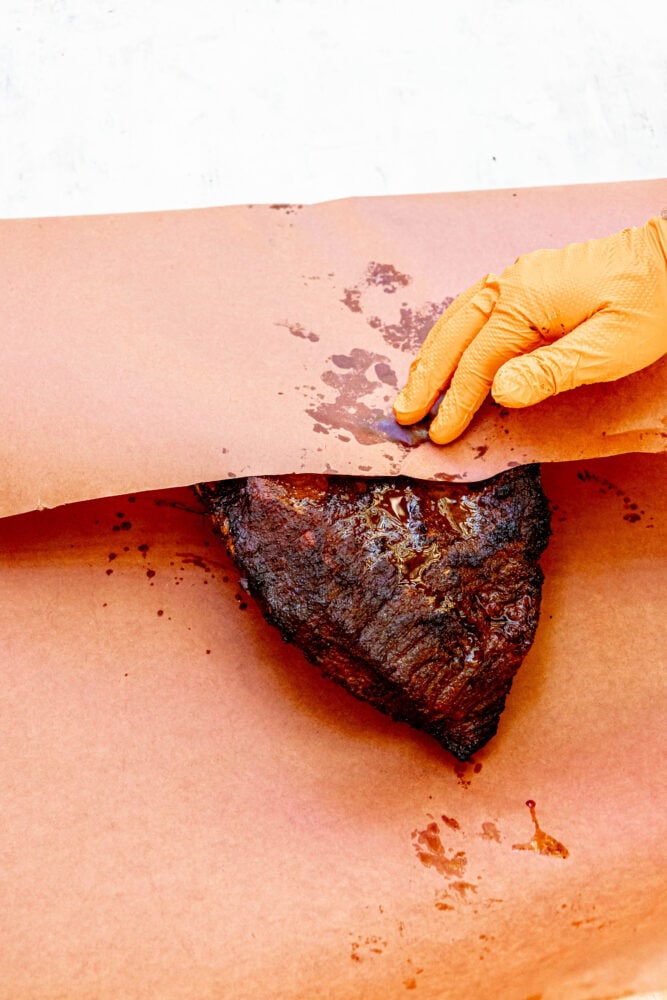
The Perfect Timing: When to Wrap Your Brisket
Different Schools of Thought
When it comes to wrapping brisket, pitmasters often have differing opinions on the best timing. While some swear by wrapping as soon as the internal temperature hits 165°F—just as the stall begins—others suggest waiting until around 180°F. This timing can vary based on specific cooking methods or desired outcomes.
- The Early Wrappers: Advocates for early wrapping argue that it helps push through the stall efficiently, ensuring a tender finish.
- The Patient Cooks: Those who prefer waiting argue that holding off gives the brisket a chance to absorb maximum smoke flavor and develop a firmer bark.
A personal anecdote: I remember the first time I wrapped too early, and the bark turned out less than ideal—it’s a lesson learned!
Recommended Wrapping Times
Most expert recommendations suggest wrapping your brisket when it reaches an internal temperature of 165°F to 170°F. This allows for a balanced approach:
- At 165°F: Wrapping helps combat the stall and retains moisture.
- At 180°F: It’s a strategic choice that maximizes the bark and smoke absorption.
Ultimately, the best time to wrap depends on your personal preference and the cooking style you aim to achieve.
Wrapping Techniques for Brisket
Choosing the Right Wrap
Selecting the appropriate wrapping material for your brisket is crucial, as it can significantly influence the final flavor and texture. Two popular options are aluminum foil and butcher paper, each with its benefits.
- Aluminum Foil: This option is often favored for its ability to create a tight seal that locks in moisture. However, it can result in a softer bark and less smoky flavor due to its barrier against smoke.
- Butcher Paper: Preferred by many competitive pitmasters, this option allows for some smoke to permeate while still cradling moisture. This helps maintain a robust bark and adds character to the flavor profile.
A personal experience: The first time I used butcher paper, I noticed a difference in bark texture that elevated my brisket to a whole new level!
Wrapping Methods: Foil, Butcher Paper, or Naked
Choosing to wrap or not wrap your brisket also depends on your cooking goals:
- Foil: Provides the quickest cooking time and retains most juices.
- Butcher Paper: Allows smoke penetration while keeping the meat moist and creating a delightful bark.
- Naked: If you’re aiming for that ultimate crunchy crust and rich smoky flavor, you might opt to cook without wrapping. Just be mindful of the stall!
By understanding these wrapping techniques, you can tailor your cooking approach to achieve the brisket of your dreams.
Impact on the Final Product
Texture and Tenderness
The way you wrap your brisket significantly affects its texture and tenderness. Wrapping during the cooking process helps create an environment that traps moisture, allowing the connective tissues to break down effectively. This results in a more tender slice of brisket that just melts in your mouth.
- Chewy vs. Tender: Failing to wrap can lead to overly chewy meat, while a well-wrapped brisket becomes irresistibly soft.
- Bark Management: While wrapping can soften the outer bark, strategic unwrapping at the end allows for a re-crisping effect, achieving that perfect balance of texture.
A personal experience of mine involved a brisket that I wrapped too tightly; while it was tender, the bark lost some of its character. Learning to manage how and when to unwrap was a game-changer.
Flavor Profile
Wrapping not only controls moisture but also influences the flavor of your brisket. When using butcher paper, for example, you allow some smoke to penetrate, which enhances the savory character of the meat without overwhelming it.
- Moisture Lock: Wrapping locks in flavors, especially if you’ve applied a robust rub or marinade.
- Less Smoke: However, foil can prevent additional smoke absorption, yielding a milder flavor.
Ultimately, the wrapping technique chosen will contribute significantly to the overall enjoyment of your brisket, accentuating tenderness while balancing flavor.

Expert Tips for Brisket Wrapping
Temperature Management
Successfully managing the temperature while cooking brisket is crucial for achieving that juicy, tender result. Most grill masters recommend wrapping your brisket when it reaches an internal temperature of 150°F to 170°F. This is the sweet spot where the brisket often hits the notorious stall—when evaporation slows cooking progress.
- Use a Reliable Thermometer: Always rely on an instant-read thermometer to check your brisket’s internal temperature without frequently opening the smoker, which could lead to temperature drops.
- Adjust Smoker Temperature: Keeping your smoker set around 275°F can help push through the stall effectively while ensuring the brisket cooks evenly.
A tip from my personal experience: I once wrapped too early, thinking it would help; instead, my bark suffered. Learning to balance timing and temperature made all the difference.
Resting Period After Wrapping
Resting your brisket after wrapping is equally important. Once you’ve removed the brisket from the smoker, let it rest for at least 30 minutes to an hour.
- Why Resting Matters: This allows juices to redistribute throughout the meat, ensuring every slice is packed with flavor.
- Keep It Wrapped: During this resting period, keeping the brisket wrapped helps maintain warmth and moisture, improving the overall texture.
In my experience, the resting phase is a game changer. Don’t rush—allowing your brisket to take its time pays off in flavor and tenderness!
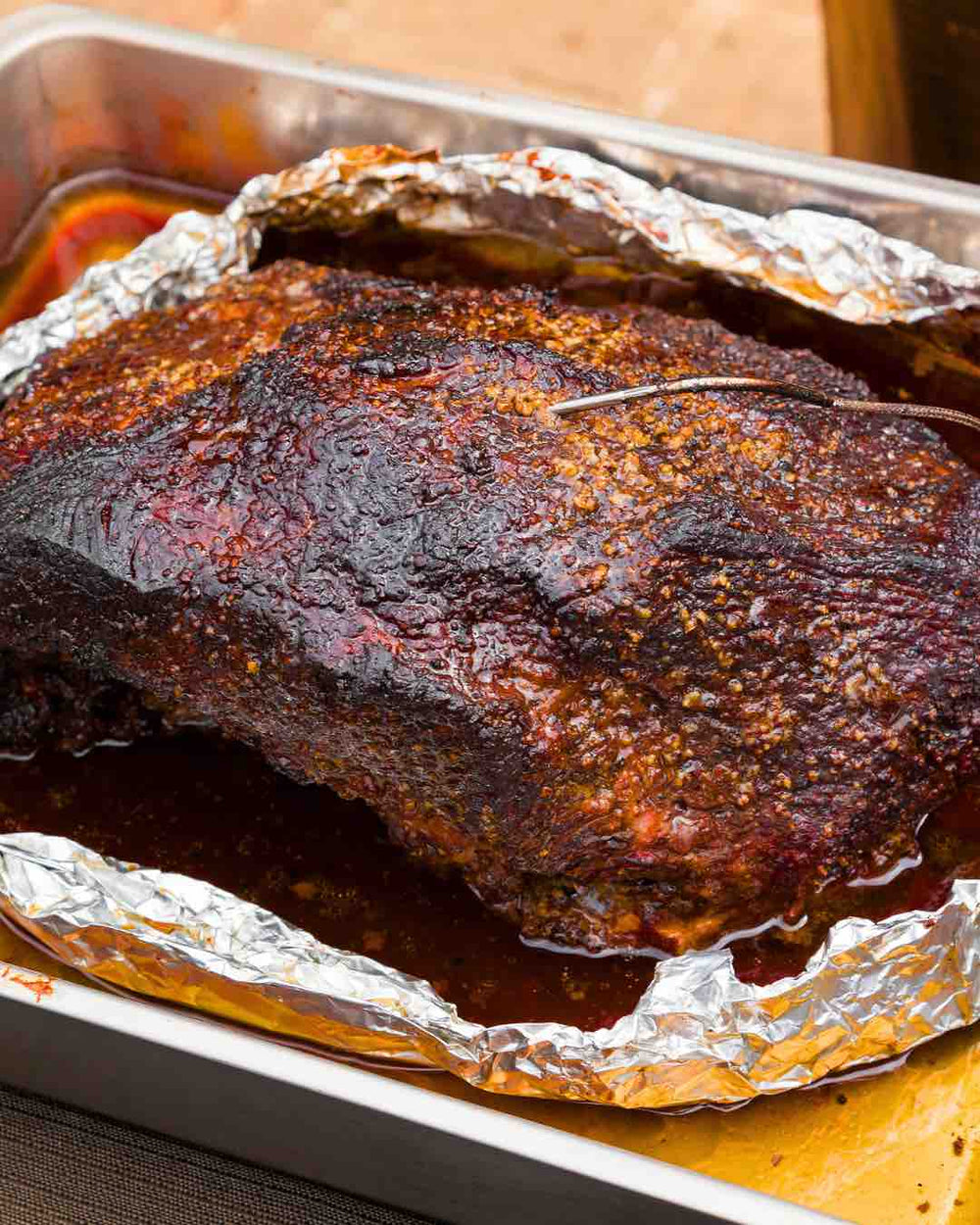
Pitfalls to Avoid When Wrapping Brisket
Common Mistakes
Wrapping brisket might seem straightforward, but several pitfalls can lead to disappointing results. One common mistake is wrapping too early. Most pitmasters recommend wrapping when the internal temperature reaches between 165°F and 170°F. Wrapping prematurely can trap excess moisture and lead to a soggy bark.
- Avoid the Stall Panic: It’s easy to get anxious during the stall when the temperature plateaus, but patience is key. Wrapping too soon can ruin your bark texture.
- Tightly Wrapping: If the wrap is too tight, it can soften your bark. Give the brisket some space to breathe while still protecting it from direct heat.
My first attempt resulted in soft bark, and I learned the hard way that balance is everything!
Troubleshooting Wrapping Issues
If you find yourself encountering issues, here are some tips:
- Bark is Soft: Try unwrapping the brisket during the last hour of cooking to allow the surface to develop a crispier texture.
- Don’t Wrap at All: If bark formation is stubborn, consider avoiding wrapping completely and let it smoke the entire duration.
By troubleshooting setup issues, you can refine your technique and ensure a delectable brisket every time!
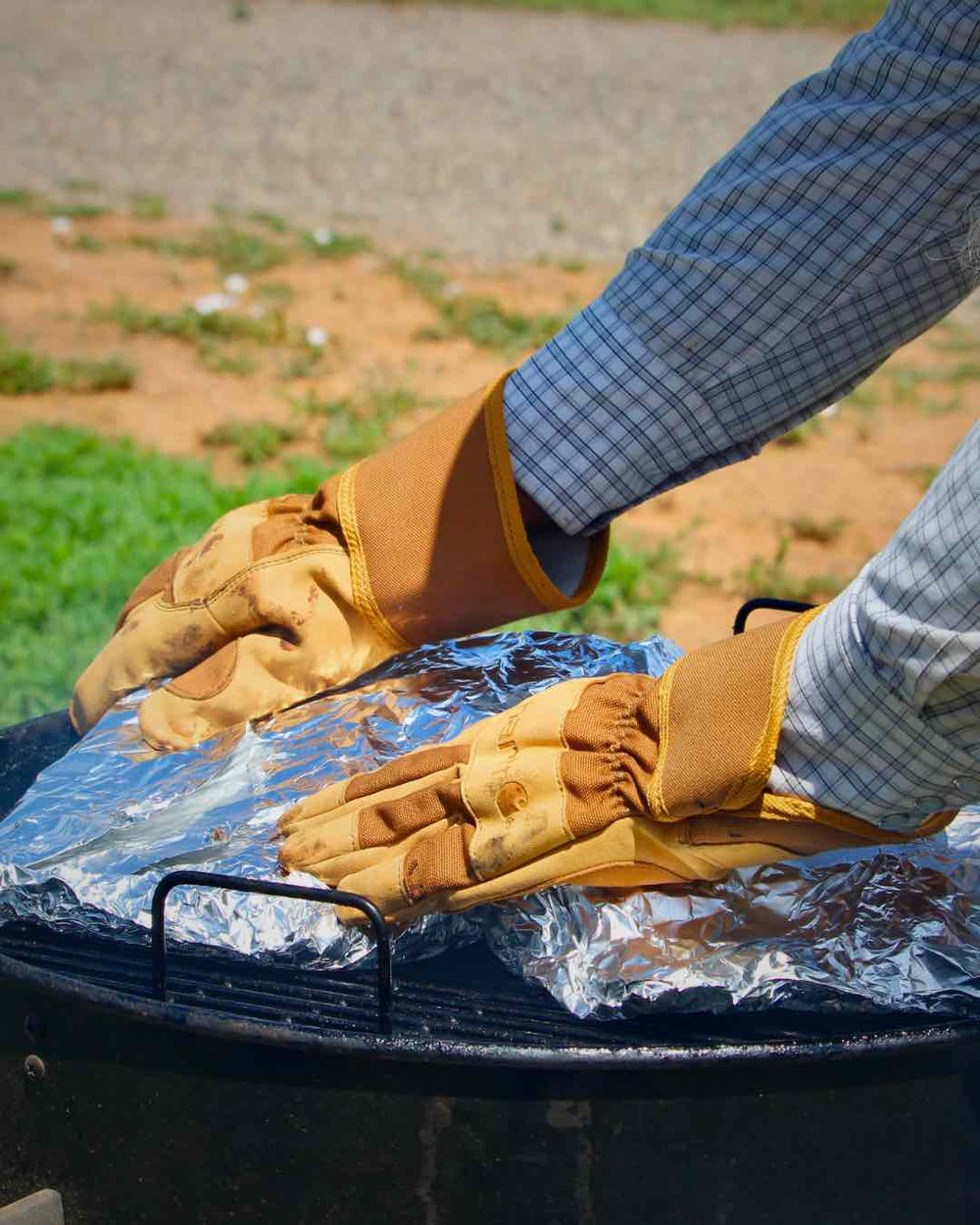
Conclusion and Recommendations
Summary of Key Findings
In wrapping brisket, timing is crucial; most pitmasters recommend wrapping when the internal temperature reaches between 165°F and 170°F. This technique, often referred to as “The Texas Crutch,” effectively helps push through the stall—a phase where evaporation can hinder cooking progress. Wrapping not only retains moisture but also allows for greater control over the final bark appearance, ensuring your brisket is both beautiful and flavorful.
Key takeaways include:
- Use a thermometer for accurate temperature readings.
- Choose between aluminum foil and butcher paper based on your desired bark texture and flavor profile.
- Remember to unwrap your brisket at the end to re-crisp the bark if needed.
Final Thoughts on Wrapping Brisket
Wrapping brisket is an art that enhances both texture and flavor. My first wrapped brisket was a revelation—juicy and tender, with that smokey flavor I always craved. Embrace the wrapping technique as a valuable tool in your BBQ arsenal. Whether you’re a seasoned pro or a novice, mastering this skill will undoubtedly elevate your brisket game to new heights! So grab your MEATER thermometer and get ready to enjoy delicious outcomes every time.

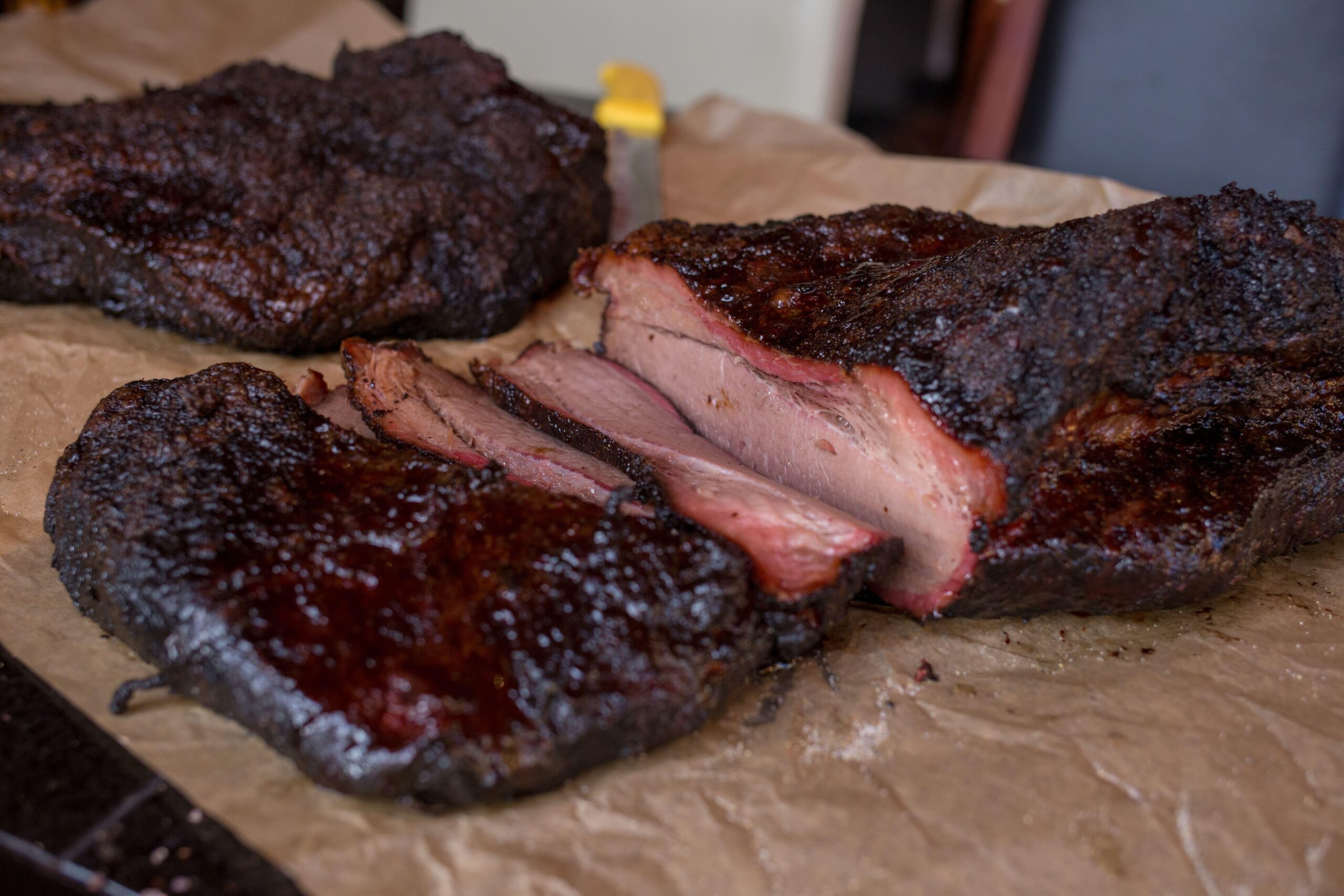
Leave a Reply